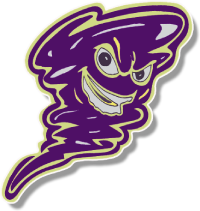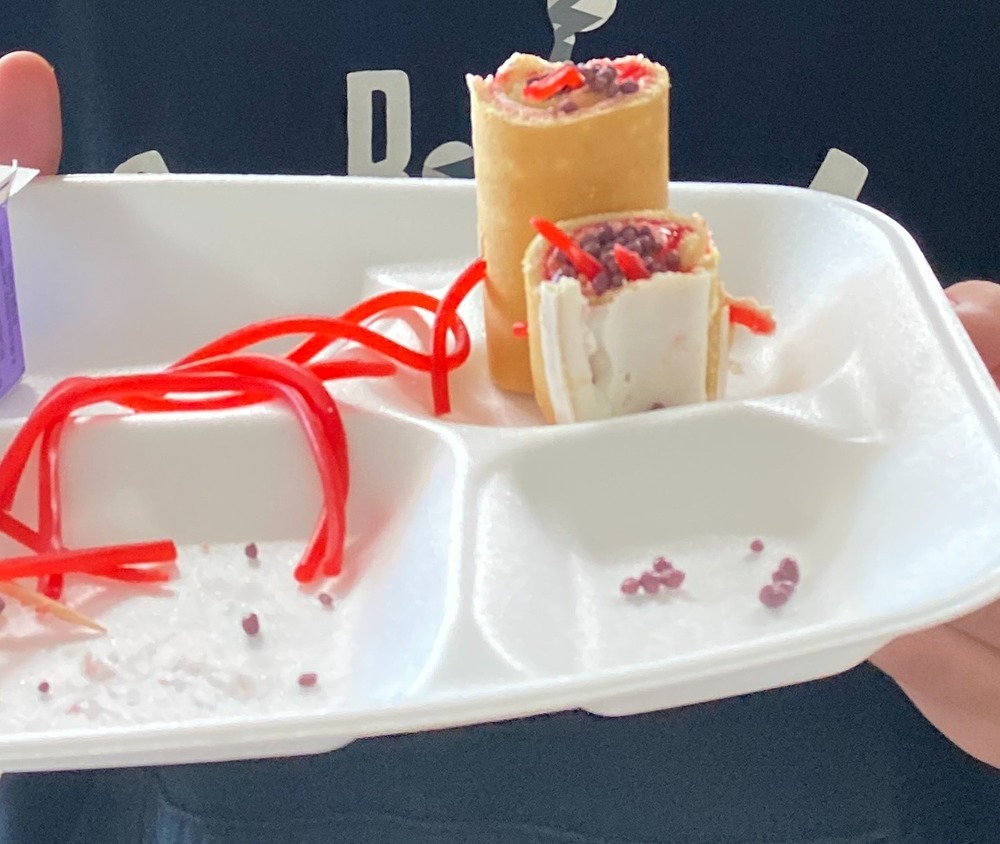RACINE — Juniors and seniors in Mrs. Courtney Manuel’s Anatomy and Physiology class got a tasty lesson in microscopic anatomy this week as they used snack foods to build edible models of compact bone.
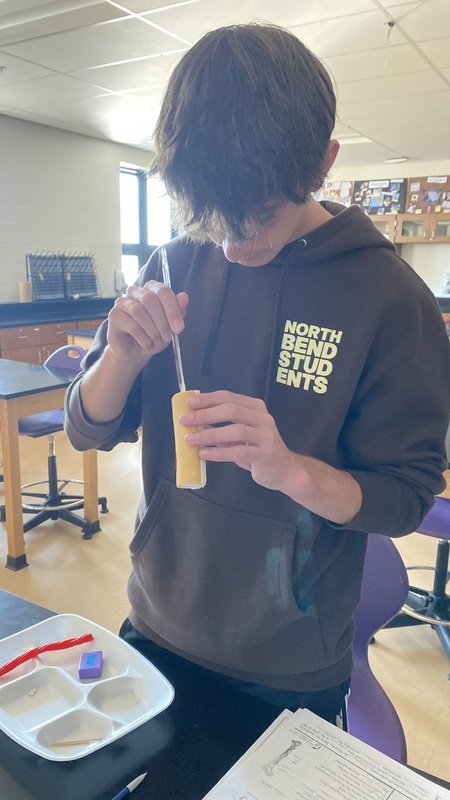
To bring the structure of an osteon (the functional unit of compact bone) to life, students were given an assortment of treats—including Swiss rolls, pull-apart Twizzlers, Nerds, strawberry cheesecake rolls, and toothpicks—and challenged to recreate the intricate architecture normally visible only under a microscope.

Each food item represented a different component of compact bone:
Swiss rolls or strawberry cheesecake rolls acted as the Osteon, showing the concentric layers of lamellae.
Pull-apart Twizzlers were shaped into Haversian canals and perforating canals, demonstrating how blood vessels and nerves travel through bone.
Nerds served as osteocytes, the mature bone cells that sit in tiny cavities called lacunae.
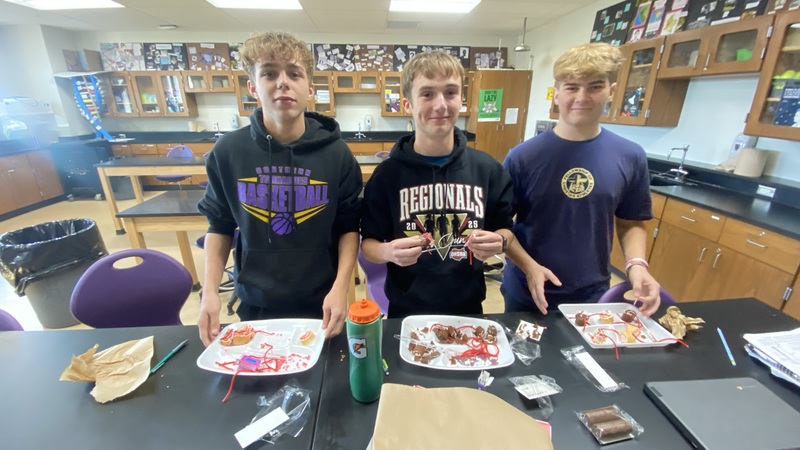
Students not only constructed their models but also labeled each structure, explained its function, and compared the edible version to real compact bone. The activity helped reinforce concepts such as nutrient transport, structural organization, and the role of osteocytes in maintaining healthy bone tissue.
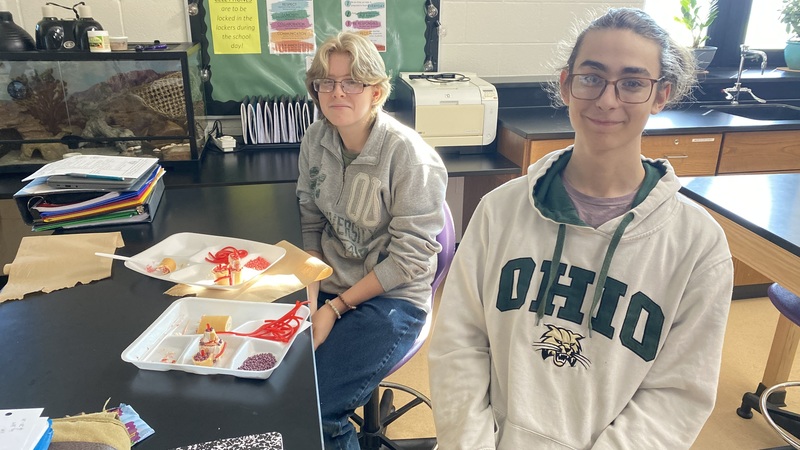
Mrs. Manuel said the goal was to combine creativity with hands-on learning: “When students can build something—and eat it—they remember it. This project helps them visualize how complex and beautifully organized compact bone truly is.”
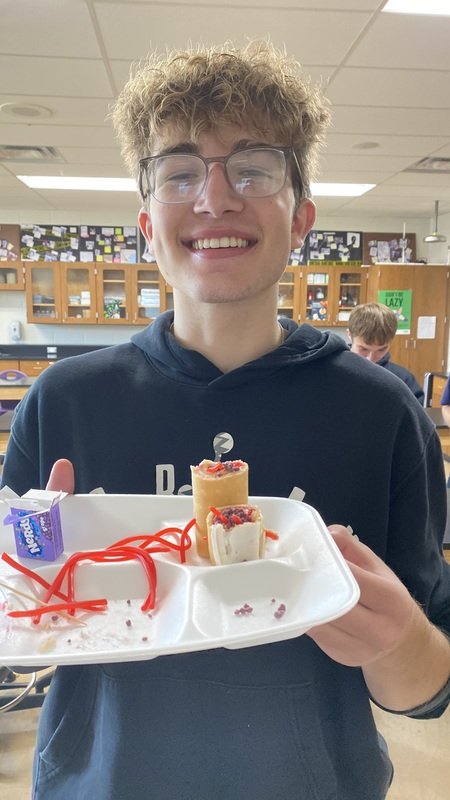
The classroom was filled with collaboration, laughter, and very tempting anatomical models, making for a memorable lesson that blended science with a bit of sweetness.

